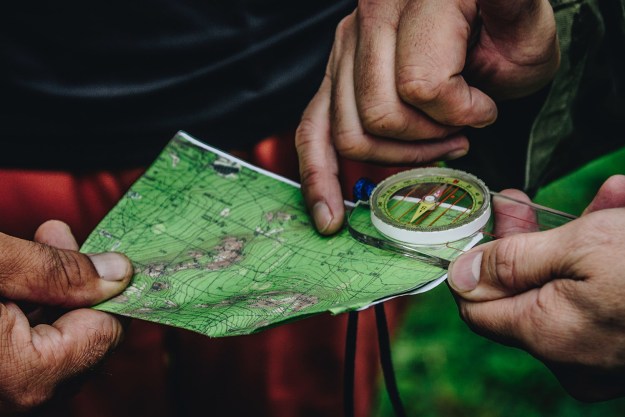It’s almost as hard to succinctly define the book Wildside: The Enchanted Life of Hunters and Gatherers as it is to summarize the kind of people you will meet in its pages.
We’ll start with the book, though. Wildside, published in 2016 by the Berlin-based publishing and creative agency Gestalten (or, more formally, Die Gestalten Verlag), is similar to many of the other artistic volumes the company has released over the past few decades in that design plays as big a role as content.
Related:
Wildside is, in short, a beautiful book. From the careful curation of the pictures to the layout of text to the placement of quotes to the use of negative space, this is a book you will likely flip through in its entirety simply because every page is pleasant to behold. But it’s not a coffee table book. (Or at least not that alone, surely).

Alongside the gorgeous pictures (which feature everything from remote forestland in Sweden, to scrublands in Spain, to mountain ranges from both coasts of America, to the occasional urban tableau), is prose that comes in several different forms. Some of it is short-form biography, telling the story of a pair of married nomads who live their lives on the road and in a tent, making their living as photographers with wedding shoots as their staple source of income (rather ironic, really, or at least a striking contrast: the ultimate curated society event vs. life lived without a permanent address). Other sections feature just a few sentences prefacing the photo essay to be found in the subsequent pages.
As for the people profiled, beyond those wandering wedding photographers, you will find an honest-to-goodness gatherer or two — foragers living off the land and eschewing processed foods, even including bread — several hunters, artists, fishermen, and at least one chef who runs a world-renowned restaurant (that would be Magnus Nilsson, the brain behind Fäviken Magasinet in northern Sweden).
Most of the characters in Wildside (and that’s not meant derisively, it’s simply accurate) are unusual and inspirational in equal measure. Reading about their lives won’t motivate most of us to abandon our climate-controlled homes and innerspring mattresses in favor of a tent or lean-to and a bed of pine boughs; instead, reading Wildside: The Enchanted Life of Hunters and Gatherers helps us to understand why some people have.

To be fair, while beautiful to behold and largely enjoyable to read, Wildside is not all that logically arranged: you have to flip through most of the book to find a given section or else know the name of the author whose section you want to read, and then check the list in the back of the book, which is arranged alphabetically by author’s first name. (Or else by topic, as in “Grain” or “Juniper Ridge.”) This can make flipping through the book for just a moment or two less satisfying than it might be, and you may well miss a topic or personality you would have found intriguing.
Mirroring the lives of those profiled in Wildside, the point here isn’t to rifle through quickly, but rather to slowly absorb. If you have the time, you will find the interest, just keep reading.


